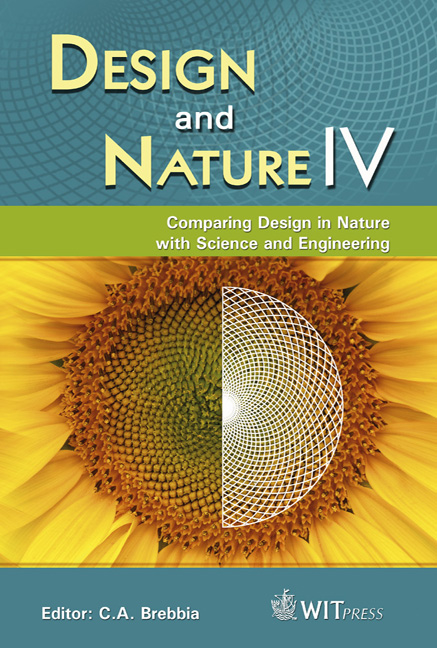A Simple Graphic Way To Reduce Stress Concentrations By Growth
Price
Free (open access)
Transaction
Volume
114
Pages
7
Page Range
79 - 85
Published
2008
Size
2,338 kb
Paper DOI
10.2495/DN080091
Copyright
WIT Press
Author(s)
C. Mattheck, I. Tesari, A. Sauer, K. Bethge & O. Kraft
Abstract
During millions of years biological load bearing structures are highly adapted to their natural loading. Due to the evolution not only the material and shape itself but also the designing mechanism is optimized. Trees for example try to avoid stress peaks and to homogenize the stress distribution on their surface. This advantageous stress state is realized by load-adaptive growth. It enlarges the load capacity and lifetime as well as reduces the waste of material, which are important demands also in engineering. The shape optimization of engineering components by computer simulation of adaptive growth was started in the late eighties in the Karlsruhe Research Centre. It was based on the use of the Finite-Element-Method (FEM) and has been called Computer Aided Optimization (CAO). Now, about 15 years after the CAO-method a drastic simplification is developed. So notch shape optimization in many cases can be done without the use of FEM, only with an easy graphic method, called ‘‘Method of Tensile Triangles’’. Like buttress roots in trees the method bridges a corner-like notch with tensile loaded triangles. The notch shape found with it may be scaled up and down according to the individual design space limitations. Fitted as a formula it can be implemented into a CAD-System, that means: shape optimization by mouse-click. The method is adjustable for multi-axial loading situations and can also be used for saving weight by removing unloaded areas in engineering structures. Keywords: shape optimization, stress concentration, design rules, fatigue.
Keywords
shape optimization, stress concentration, design rules, fatigue.





